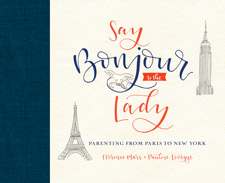 “The New Old Me” by Meredith Maran
“The New Old Me” by Meredith Maran
(Blue Rider Press, pp 302, $27.00)
A great undiscovered jewel, and from what I infer, a book that deserves to get into every single book club in the nation, and beyond. My enthusiasm is perhaps excessive. There comes a time when a book appears and has valuable lessons to teach us. We learn something we never suspected existed. People in their 60s’ have a life as well, and they go through ups and downs like the rest of us, and still have to learn lessons along the way. They can even display resilience and an appetite for life. It is pleasant surprise that a publisher would release a book that actually concerns our aging nation, where so much emphasis rests on the land of twenty-something Lena-Dunham wannabes teaching the world with great self-assurance life lessons and proper etiquette. Which begs the question: what is more interesting, someone who fumbles through life while brandishing a narcissistic flag and seems to have all the answers? Or someone who has worked hard to build a life, only to lose everything overnight and who has to pick herself up to start again—at age sixty?
This is exactly what happens to Meredith Maran who had a perfect life, meaning living with a sense of safety that no one could ask for more, with a good marriage (to the woman of her dream), a beautiful Victorian house, a good writing career, and an active social life. And then Life comes knowing at her door, like it tends to when things are going too well, and it takes everything away, and more. The best friend dies; her father is diagnosed with Alzheimer; she loses her job, and the house, along with the marriage. Welcome to “The New Old Me.” This is where we meet Meredith, dead broke about to move to La La Land, CA, where she struggles to rebuild her life and self, with all the scrawny feathers that come attached to them, fanned by heartache, loneliness, and self-doubt. The energy of the prose however shows us that beyond the circumstances lies a strong-willed and witty woman, and sure enough slowly Meredith crawls out of her trenches, and she does so with humor. For those in search of summer inspiration, this is your book. Look no further. (It was my wife’s favorite read so far this year.)



 “
“